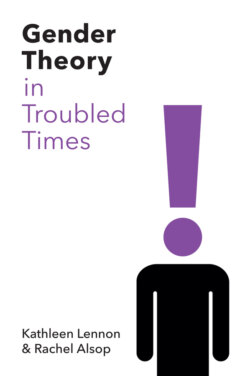Читать книгу Gender Theory in Troubled Times - Rachel Alsop - Страница 10
Gender essentialism
ОглавлениеThe widespread use of the term ‘gender’ to capture sexed difference has not been associated with any extensive rejection of gender essentialism. Indeed, there has been a resurgence of a very visible gender essentialism in everyday life. This is particularly marked in relation to children. Following the informative scan, prospective parents in the UK and the US now often throw pink- or blue-themed parties to announce the gender of their unborn baby. From birth, clothes and accessories are strongly differentiated in colour and style. Toys are divided into those appropriate for boys and those for girls. Behaviour is anxiously policed for signs of cross-gendering. Oddly, these factors seem to have increased as challenges mount to gendered inequalities both in the workplace and in the public world. It has increased and not decreased in the last decade. Now even Lego comes in differentiated colours and themes. Such moves have also been resisted, with some parents challenging retailers to modify their marketing practices. A curious example is found in discussions of education. Currently, in many places where both have equal access to education, girls outclass boys. This would seem to knock on the head previous arguments that the underachievement of girls was due to differences in their brains and to make clear it was a result of social and cultural factors. But such naturalistic arguments have only re-emerged in a different form. Boys, it is now claimed, have different brains to girls, and the teaching methods currently employed do not chime with them. (For a discussion of claims of differentiated brains, see chapter 1, and for the complexity of the educational data on which these claims are made, see chapters 3 and 5.) Such public reinforcement of supposed gendered differences in children comes (presumably non-accidentally) with a large rise in children claiming that their gender has been misassigned and seeking to change it (Hurst 2018).
The reinforcement of gender essentialism in everyday life runs alongside a sinister reinforcement taking place politically across the globe in which claims of gender essentialism – an insistence on natural or God-given differences between men and women that indicate appropriate social roles – are being harnessed to bolster right-wing populist claims and new nationalisms, often interwoven with influence from the religious right. These claims are linked to attacks particularly on the reproductive rights of women and are threatening to the legitimacy of LGBTQI+ communities. In recent years these movements have launched attacks on gender theory itself (Meret and Siim 2013; Kuhar and Paternotte 2017; von Redecker 2018; Kantola and Lombardo 2019). We turn to these developments below.
Gender essentialism has also returned within the feminist community, particularly but not exclusively in the UK, around the question of the rights of trans women. Interestingly, the debate is concerned primarily with the status of trans women rather than trans men. But some organizations made up of women suggest that WNT (women who are not trans) will suffer if the boundaries are drawn to include TW (trans women) as women (Murray 2017).1 In this book we both draw the boundaries to include trans women and argue that this is an appropriate place to draw them. We refute the suggestion that this damages the interests of women with intersectional identities of other kinds (see discussions in chapters 5 and 7). We also return to these points further below.
